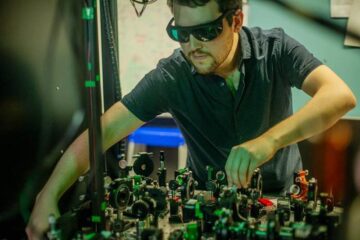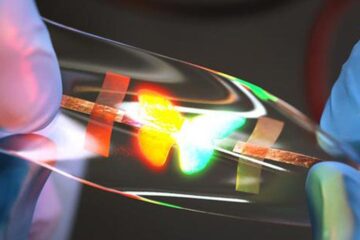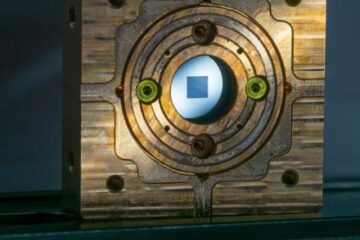Traffic navigation systems linked to accident risk

Swift or safe? That may be the question drivers with navigation systems ask themselves in future.
A new study by researchers at the University of Toronto Intelligent Transportation Systems (ITS) Centre and Testbed suggests in-car systems, designed to guide drivers around traffic jams and accidents quickly, could actually cause a temporary surge in the risk of accidents. “Discovering that traveller information systems may be good for travel time but not for overall safety was shocking because they are generally supposed to provide benefits,” says Professor Baher Abdulhai, the director of the ITS Centre and Testbed in the Department of Civil Engineering.
Using computer simulations of route guidance systems, Abdulhai’s team found accident risks peaked immediately after drivers were informed of traffic congestion and changed their routes. “There was an increased level of activity as people ’bailed out’ to bypass congestion,” says Abdulhai – for example, as drivers left a jammed freeway for city streets and encountered accident-prone intersections. However, because drivers reach their destination sooner, the accompanying drop in accident risk eventually counterbalances the earlier surge.
When Abdulhai ran the simulation adding safety measures as criteria for selecting routes, such as a route involving the fewest number of turns, the accident risk dropped about 10 per cent. Traffic-responsive guidance systems could incorporate such safety-conscious measures in roughly a year, he says. The study, which was published in the July/August issue of the Journal of Transportation Engineering, received significant funding from private and public partners and the University of Toronto.
Contact: Professor Baher Abdulhai, tel. (+1) 416-946-5036, baher@ecf.utoronto.ca
Media Contact
More Information:
http://www.utoronto.caAll latest news from the category: Transportation and Logistics
This field deals with all spatial and time-related activities involved in bridging the gap between goods and people, including their restructuring. This begins with the supplier and follows each stage of the operational value chain to product delivery and concludes with product disposal and recycling.
innovations-report provides informative reports and articles on such topics as traffic telematics, toll collection, traffic management systems, route planning, high-speed rail (Transrapid), traffic infrastructures, air safety, transport technologies, transport logistics, production logistics and mobility.
Newest articles

Combatting disruptive ‘noise’ in quantum communication
In a significant milestone for quantum communication technology, an experiment has demonstrated how networks can be leveraged to combat disruptive ‘noise’ in quantum communications. The international effort led by researchers…

Stretchable quantum dot display
Intrinsically stretchable quantum dot-based light-emitting diodes achieved record-breaking performance. A team of South Korean scientists led by Professor KIM Dae-Hyeong of the Center for Nanoparticle Research within the Institute for…

Internet can achieve quantum speed with light saved as sound
Researchers at the University of Copenhagen’s Niels Bohr Institute have developed a new way to create quantum memory: A small drum can store data sent with light in its sonic…





















